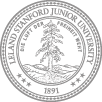Commitment to Graduate Student Diversity (GAP 2.5)
Summary
Stanford University is committed to achieving a diverse graduate student population, and will take appropriate steps to create a student community that is both highly qualified and diverse in terms of factors such as culture, socioeconomic status, race, ethnicity, gender, work and life experiences.
1. RATIONALE AND POLICY
Equal opportunity and affirmative action in the recruitment of faculty, staff, and students have been integral components of Stanford University's agenda for diversity for decades. In a statement issued in February 2001, President John Hennessy reaffirmed that commitment, observing that "our educational purposes will be served best if the country's demographic diversity finds a presence on campus, and we thereby reflect the full range and the full capacity of this society."
Of special importance to institutions such as our own, a lack of diversity in Ph.D. programs nationwide means that the future professoriate will not reflect the population it teaches and thus will offer too few role models who can teach and inspire by their own achievements.
The Office of the Vice Provost for Graduate Education works collaboratively within the university to broaden the participation and promote the academic success of graduate students from a variety of backgrounds, including those underrepresented within research universities. Diversity includes, but is not limited to, culture, socioeconomic background, race, ethnicity, gender, gender identity, sexual orientation, disabilities, religion, and life experience.
A wide range of opinions, perspectives and experiences is essential to educational excellence. At the graduate level, a diverse community of scholars asks unexpected questions and contributes divergent insights, pushing the forefront of knowledge further and faster. As a result, the Stanford community reaps the educational benefits of diversity, while preparing future generations of leaders for a global society.
Success in our efforts means that the individuals chosen for admission to our graduate programs must continue to be, as they have been in the past, superbly qualified and capable of attaining the highest level of academic excellence. Success also depends on the enthusiastic commitment and daily activities of individual faculty, staff members, and students. We must work diligently to encourage applications and to recruit those who would bring such diversity to the graduate student population, alongside our steadfast commitment to create a hospitable and supportive environment for all - and especially for students whose social and educational backgrounds may differ from those of the majority of our students.
2. IMPLEMENTATION GUIDELINES
| PROCESS STEPS | RESPONSIBILITY | |
|---|---|---|
| 1. | Takes appropriate steps to recruit a diverse pool of applicants for graduate study at Stanford. | Department |
| 2. | Works with each student and appropriate Stanford organizations toward the goal that all students enjoy a successful and rewarding experience at Stanford, including timely conferral of degrees. | All involved parties |


